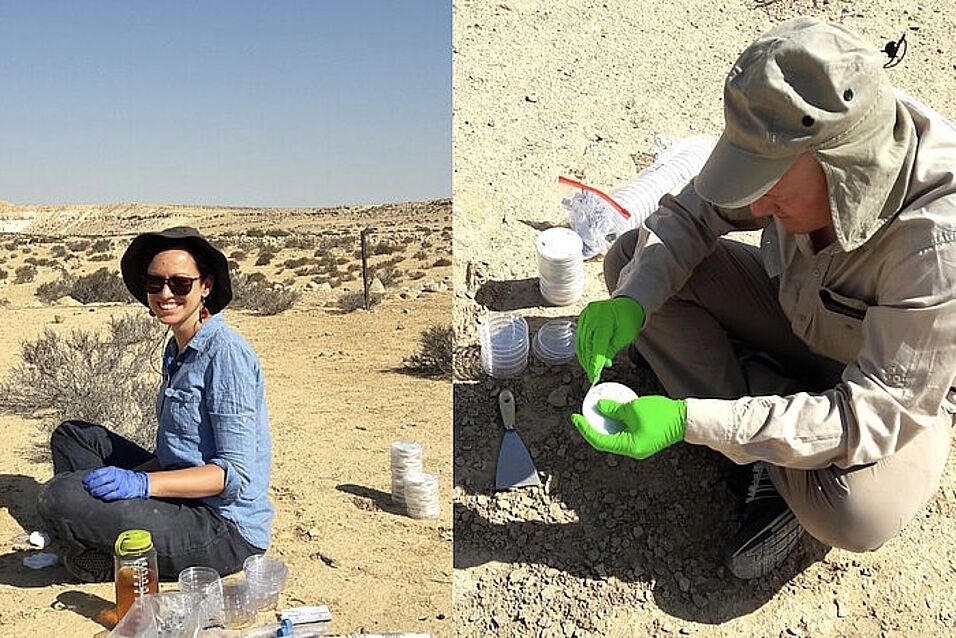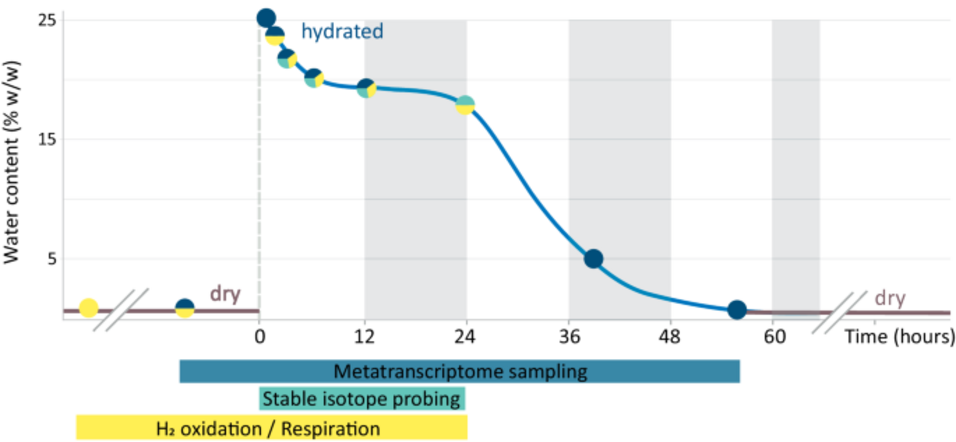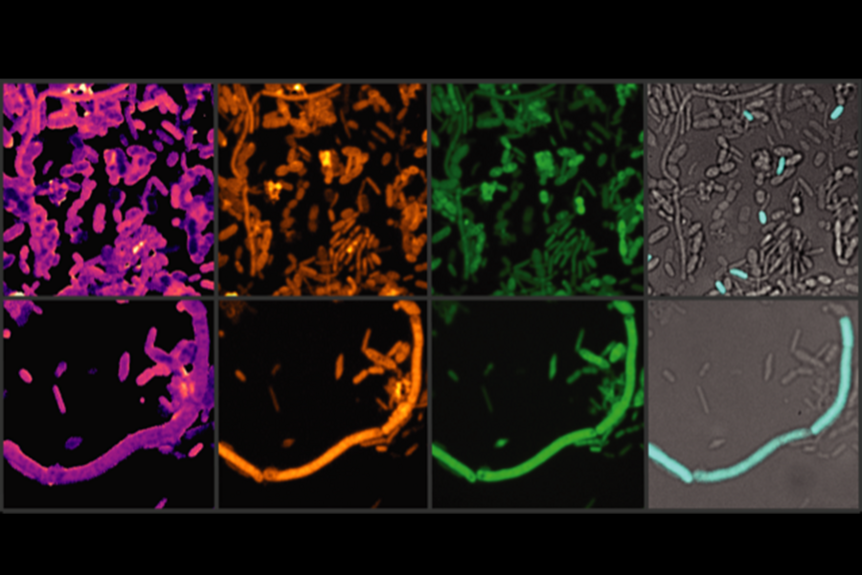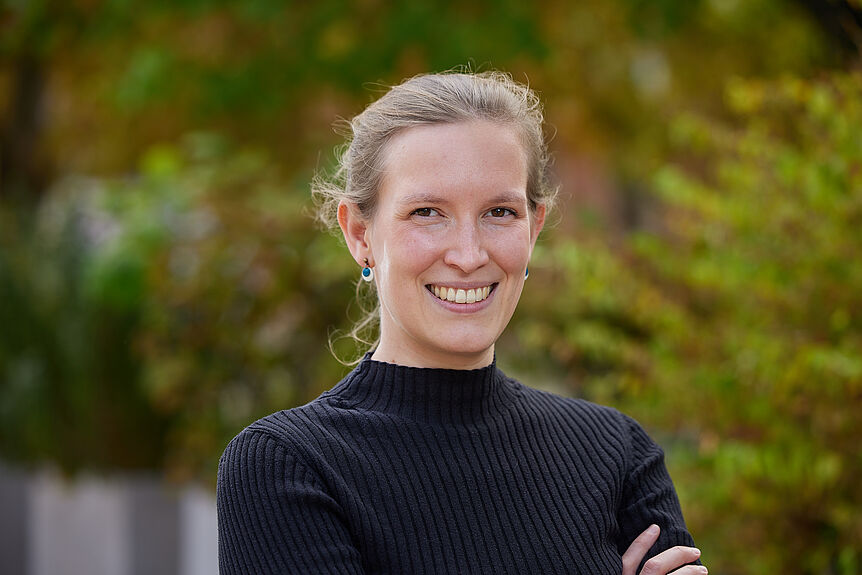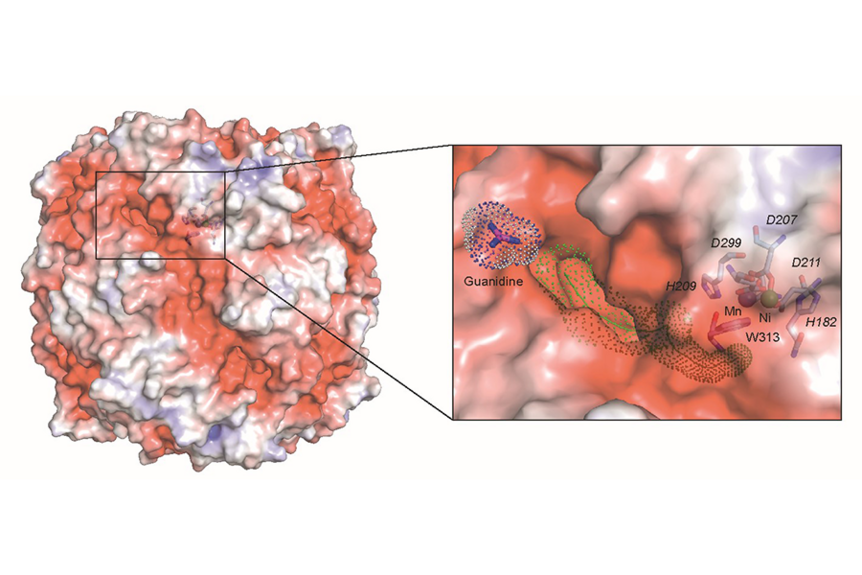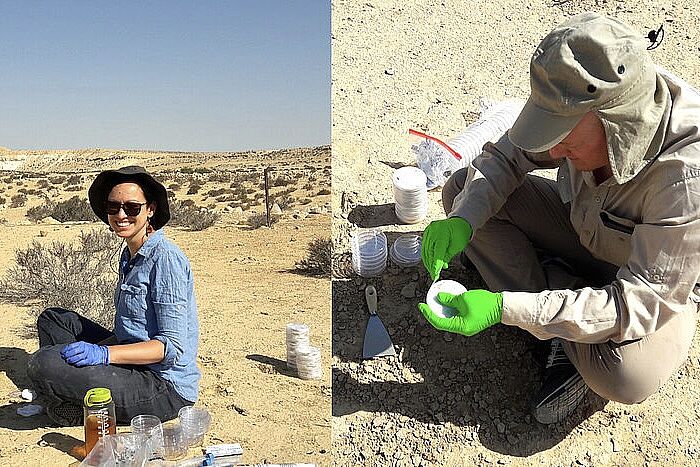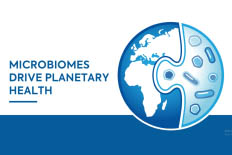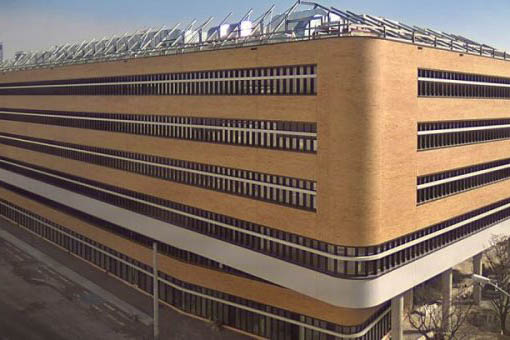The study utilized NanoSIMS to investigate how microbial communities in desert biocrusts respond to rare rain events by measuring single-cell metabolic activity and biomass production. A key scientific question addressed was whether desert microbes exhibit rapid growth after hydration to compensate for potential cell loss due to desiccation. By tracing deuterium (D) incorporation from heavy water (D₂O) into cellular biomass, the researchers determined that nearly all biocrust microorganisms resuscitate quickly upon rehydration, yet their growth rates remain limited, with median replication times ranging from 6 to 19 days. This suggests that desert biocrust communities rely on resilience and metabolic maintenance rather than rapid proliferation to survive cycles of drought and hydration.
Additionally, NanoSIMS analysis revealed that anabolic activity was widespread across diverse microbial groups, including cyanobacteria and heterotrophic bacteria, regardless of taxonomy. However, despite immediate activation, only a fraction of cells exhibited significant biomass increase within 24 hours, indicating that biocrust communities prioritize energy generation and repair mechanisms over rapid reproduction. These findings challenge the assumption that short-lived rain events drive bursts of microbial growth, instead highlighting that desert microbes sustain ecosystem functions through long-term persistence rather than high productivity.
Links:
In the media:
- Press release from University of Vienna
- Article in Science ORF
- Article in Austria Press Agency
- Article in Salzburger Nachrichten
- Article in Science X Daily
- Article in Life Science Austria
- Article in Die Linde
- Article in VBIO
- Article in Technology Networks
- Article in News Concerns
- Article in ScienMag
- This Week in Microbiology Podcast
- Article in Welt.de
- Article in Science Daily

